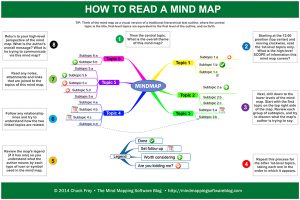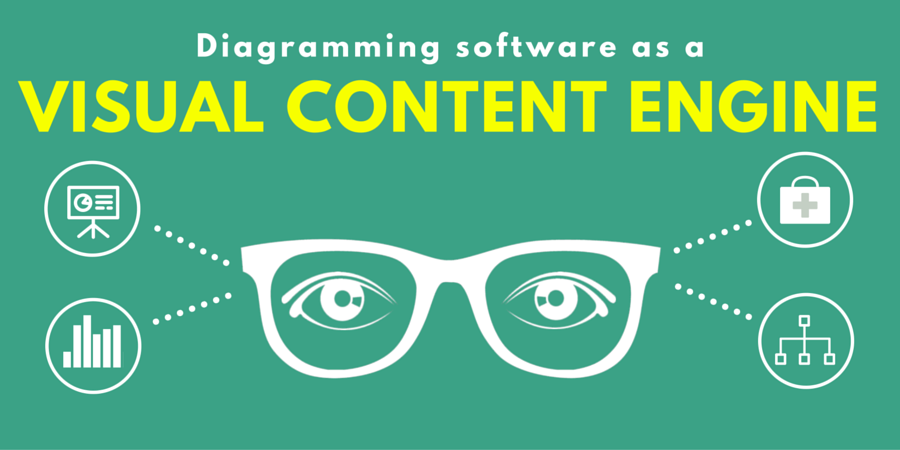Diagramming software continues to grow in the number and type of diagrams and infographics it can produce. It has moved far beyond its initial job of mapping process flows, and can now be used to produce everything from marketing charts and floorplans to crime scene re-enactments and business forms. You can even create graphs and charts from small data sets.
As a result, I believe diagramming software now serves as a powerful “visual content engine,” enabling its users to express their ideas like never before.
Making it easy to express your ideas – visually
 What makes this evolution especially powerful is that today’s diagramming software is designed with exceptional ease of use in mind, so that just about anyone can translate their visual inspirations into tangible form. When software developer Shapeware first debuted Visio in 1992, it was quite complex. You literally needed to be an engineer or a skilled graphic artist to use it. Plus, it only did one thing – flow charts. Microsoft didn’t do a lot to improve its usability over the years.
What makes this evolution especially powerful is that today’s diagramming software is designed with exceptional ease of use in mind, so that just about anyone can translate their visual inspirations into tangible form. When software developer Shapeware first debuted Visio in 1992, it was quite complex. You literally needed to be an engineer or a skilled graphic artist to use it. Plus, it only did one thing – flow charts. Microsoft didn’t do a lot to improve its usability over the years.
As a result, new market entrants like SmartDraw and LucidChart emerged with a goal of bringing diagramming and visual thinking to the rest of us. Both developers now offer web-based versions of their applications, so you can easily and inexpensively experiment with diagramming and visual thinking at a fraction of the cost of licensed desktop software, and without installing software on your computer.
Flexibility is key
 Like mind mapping software, diagramming software enables you to start with a professionally-developed template, saving you hours of time. Or, if you prefer, you can design your own graphics from scratch. In either case, you can easily move shapes and other objects around the workspace, embellish them with fill and border colors and other effects, and connect them in any way you choose. You can also align and reformat them as needed.
Like mind mapping software, diagramming software enables you to start with a professionally-developed template, saving you hours of time. Or, if you prefer, you can design your own graphics from scratch. In either case, you can easily move shapes and other objects around the workspace, embellish them with fill and border colors and other effects, and connect them in any way you choose. You can also align and reformat them as needed.
Most importantly, you can play “what if” with different arrangements of elements until they match the visual you have in your mind.
These programs won’t replace the polish and pizzazz of a professional graphic designer, but for most of your day-to-day work – producing a visual for a report or presentation, or sharing the seed of an idea with your team – they’re more than adequate.
My experience with diagramming software
I have used SmartDraw (and more recently LucidChart) to create a huge variety of graphics for this blog and for my work. This blog post contains several examples. A lot of my work is focused on conveying ideas in clear, compelling formats to others. These applications help me to do that. For that reason, I consider them to be part of my core toolset for creating visual content.
A picture is worth far more than 1,000 words
Some wise person once said many years ago that “a picture is worth a thousand words.” Those words ring very true today in our post-literate world. Often, a well-designed diagram can explain complex ideas and concepts in a fraction of the space that would be required to do so using words alone.
Our brains are hard-wired to love pictures and graphics; that’s why infographics are so popular today, because they convey a wealth of information and context in a very compact space. We need to know and understand quickly – these visuals help us to do that!
Related articles:


Leave a Reply